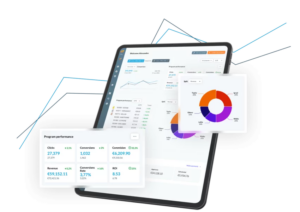Key steps to a successful influencer campaign
Influencer marketing plays a central role in performance-driven strategy. Working with influencers significantly increases brand visibility and credibility. Here are four key tips, drawn from conversations with:
- Émilie Daudin, a French content creator for over 10 years (blog and Instagram)
- Maddy Poupardin, independent influencer strategy consultant and former head of affiliate marketing at La Redoute (a French fashion/lifestyle brand)
- Mylène Couturon, senior account manager at Affilae, specializing in tailored affiliate strategies
1. Track the right KPIs at the right time for a successful influencer strategy
Choosing the right KPIs (Key Performance Indicators) is essential for effectively measuring the impact of an influencer campaign.
KPIs should reflect the behavior of your target audience. Consumers are at the heart of any strategy, and engaging content should inspire interest and desire. Tracking metrics like clicks, sales, and conversion rates at strategic moments allows you to adjust your marketing efforts and maximize campaign impact.
Maddy:
“In the home sector, purchase cycles are longer because consumers take time to think. It’s essential to evaluate performance over a longer period—like conversion trends or repeat visits—rather than focusing only on immediate results.”

2. Adapt promo code strategies to the brand
Personalizing promo codes based on the brand and product preserves brand image while boosting sales.
Émilie:
“Every brand has a unique audience, and promo codes need to fit it. For luxury products, a large discount could hurt brand perception. For everyday items, an attractive code can quickly drive sales.”

AIME’s experience shows that well-planned promo codes create an anticipated event for customers, boosting sales without compromising brand positioning. Gradual integration of codes after multiple collaborations preserves a premium image.
Mylène:
“The key is balancing brand strategy with an attractive CTA. It’s also crucial to educate audiences that promo codes aren’t permanent, to avoid a discount perception. Tailoring codes for each campaign with unique branding reinforces exclusivity.”*
3. Recurrence: a long-term approach
Building lasting relationships with influencers strengthens authenticity and trust with their audience. Continuous collaborations benefit both the brand and the influencer.
Émilie:
“It’s essential to align with the brands’ values. I don’t accept just any proposal—my community follows me for authenticity. Working regularly with the same brands builds a story around them, increasing engagement and customer loyalty.”

4. The benefits of affiliate marketing in influencer strategy
Affiliate marketing is a powerful lever that combines performance and brand image while boosting the impact of influencer campaigns. In 2024, with the growing importance of data and analytics, measurable actions are crucial.
Maddy:
“Affiliate marketing has become a relationship-driven tool, where content quality is key to achieving performance goals. It allows real-time tracking, strategy adjustments, and incentivizes influencers to actively promote products. This not only optimizes sales but also strengthens the connection between brands and consumers, who increasingly value authenticity and transparency.”

Affiliate marketing has evolved over the past decade to meet new market expectations. It offers the perfect balance between measurable performance and brand image while responding to an audience that demands high-quality, authentic content.






